Peacock Mantish Shrimps
Peacock Mantis Shrimps (Odontodactylus scyllarus)
They are found in the indo Pacific region and we have many of these on all of the dive sites we visit, but you do have to look closely for them.
Although called shrimp they are not actually true shrimp, but a separate family of crustaceans called Stomatopods.
They are mostly found at the base of reefs where they build their burrows, the excavate a u shape tunnel by collecting nearby rubble or other substrate to go over and around suitable sites of rock crevices or corals.
They are very colorful and flamboyant when you find them, with red, green and blue warning coloration.
They feed on various fish and invertebrates and are fast, efficient hunters, though they often wait for their prey to walk by and pounce on them. The peacock is a ‘smashers’ type of mantis shrimp it has two club-like appendages to exo skeleton animals such as crabs, clams and snails. With just one hit the ‘club’ produces a force almost as fast as a 22-caliber bullet, 10m per sec, and this has been know to break aquarium glass. This is so fast it can actually vaporize the water at the point of impact!
In addition to the smashing clubs they also have a shorter body compared to the longer, very flexible tail, this lets them turn quickly and easily in tight spaces and burrows. The tail and the specialized swimming appendages on its underside provide a surprisingly fast swim when on the hunt, or when they get scared.
The eyes are stalk like which allows them to accurately see their prey from the protection of the crevices they live in, the eyes are complex with at least 8 types of different colour sensors, which include ultraviolet and polarized light. They can see 10 times more colours than humans.
From the mantis shrimps that have been kept in captivity, we have learned that they are the only invertebrates that can actually recognize individuals, they do this by body odor!!
They can be aggressive with others of there own species and get into fights using the flexible tails, they sometimes can fight to the death, but often decide who is victorious before either gets seriously hurt.
Some of the shrimps can mate for life, which can be up to 20 years, whilst others prefer a one-night stand. They usually court then come together. The female can hold fertilized eggs under the tail or in the forearms, or they can be laid in burrows and are watched over until they hatch into Larvae. These larvae are also keen predators often preying on other larvae during the 3 months it takes to hatch.
To see these fascinating shrimps you can join us on our daytrips or liveaboards where they are often seen at the divesites, ask our staff about them and other interesting creatures we have in the waters of Thailand.
Learn more about the marine life in our area by taking the Naturalist specialty course with us.
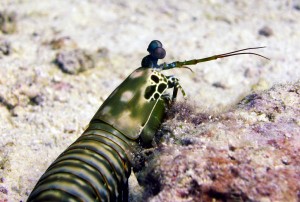
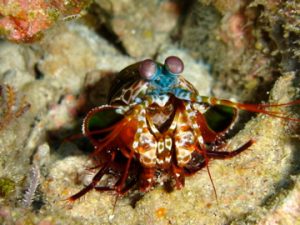
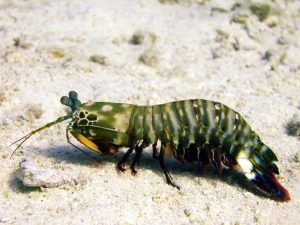
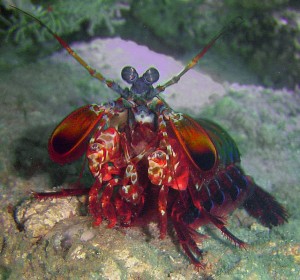
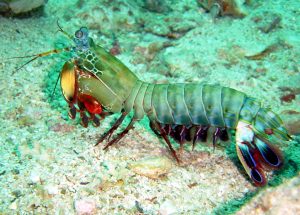





Scubacat Community